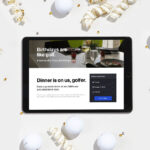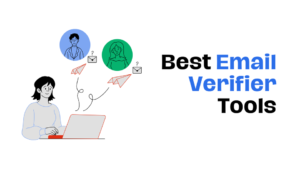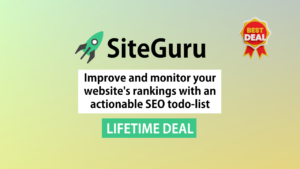Email marketing is a powerful tool for businesses. It can help drive engagement and boost sales.
Seasonal email marketing strategies can significantly impact your business results. By aligning your campaigns with specific times of the year, you can better connect with your audience. Each season offers unique opportunities to tailor your messages and promotions. For example, the holidays bring a chance to send festive, gift-focused emails, while back-to-school season is perfect for offering school-related discounts.
Understanding the right strategies for each season can help you stay relevant and top-of-mind for your customers. In this blog post, we will explore some effective seasonal email marketing strategies that can help your business achieve better results throughout the year. Let’s dive in!

Credit: www.facebook.com
Table of Contents
ToggleIntroduction To Seasonal Email Marketing
Seasonal email marketing is a powerful tool for engaging your audience. It involves tailoring your email campaigns to match specific times of the year. This strategy can boost your open rates and conversions. By aligning your emails with holidays or events, you create relevant content. Your subscribers are more likely to engage with these timely messages.
Importance Of Timing
Timing is crucial in seasonal email marketing. Sending your emails at the right moment can increase their effectiveness. Consider the dates of holidays or events. Plan your campaigns around these dates. Early planning ensures your emails reach your audience when they are most receptive.
For instance, send holiday promotions well before the actual holiday. This gives your subscribers time to make purchasing decisions. Timely emails can also help you stand out from competitors. They show that you are aware of your customers’ needs and interests.
Leveraging Seasonal Trends
Seasonal trends can provide insights for your email content. These trends can help you understand what your audience is looking for. Use this information to craft relevant and engaging emails. For example, during winter, focus on warm and cozy products.
Track past performance of seasonal emails to identify what worked. Use these insights to refine future campaigns. Keep an eye on current trends to stay updated. This ensures your emails remain relevant and interesting to your subscribers.
By leveraging seasonal trends, you can create compelling content. This increases the chances of your emails being opened and acted upon.

Credit: www.amazon.com
Crafting Compelling Subject Lines
Crafting compelling subject lines is crucial for the success of your seasonal email marketing campaigns. A well-crafted subject line grabs attention and entices recipients to open the email. It’s the first impression, and you want to make it count. Let’s explore some strategies to enhance your subject lines.
Creating Urgency
Adding urgency to your subject lines can increase open rates. Phrases like “Limited Time Offer” or “Only a Few Left” encourage quick action. This method plays on the fear of missing out.
Use specific deadlines to create urgency. For example, “Sale Ends Tonight” or “Last Chance: 24 Hours Left.” These lines push recipients to act fast.
Personalization Techniques
Personalizing subject lines can make your emails stand out. Use the recipient’s name or location. For instance, “John, Your Special Winter Sale” or “Exclusive Deals for New York Residents.” These feel more relevant and engaging.
Segment your audience for better personalization. Tailor subject lines to different groups. For example, “Holiday Gifts for Tech Lovers” or “Best Fashion Deals for You.” This ensures the content resonates with each recipient.
Segmenting Your Audience
Segmenting your audience is a crucial part of seasonal email marketing. By dividing your audience into smaller groups, you can send more personalized and relevant emails. This increases engagement and drives better results.
Demographic Segmentation
Demographic segmentation involves dividing your audience based on their characteristics. Common factors include:
- Age: Tailor your message to different age groups.
- Gender: Create offers and content that appeal to men or women.
- Location: Consider regional preferences and holidays.
- Income Level: Offer products that match their spending ability.
For example, a clothing retailer might promote warm jackets to customers in colder climates. Meanwhile, they could promote summer wear to customers in warmer areas. This approach ensures your emails feel relevant to each segment.
Behavioral Segmentation
Behavioral segmentation focuses on the actions of your audience. This includes:
- Purchase History: Send recommendations based on previous purchases.
- Email Engagement: Tailor content to those who frequently open your emails.
- Website Activity: Target users based on their activity on your site.
- Cart Abandonment: Remind users to complete their purchase.
For instance, if a customer often buys electronics, you could send them early access to a sale on gadgets. This strategy makes your emails more relevant and encourages repeat purchases.
Using both demographic and behavioral segmentation together can create a powerful marketing strategy. This approach ensures your emails are timely, relevant, and engaging.

Credit: www.facebook.com
Designing Engaging Email Content
Designing engaging email content is crucial for successful seasonal email marketing. The right design can capture your audience’s attention and drive conversions. Engaging content includes appealing visuals and effective copywriting. Both elements work together to create a compelling message.
Visual Appeal
Visual elements make emails more attractive. Use high-quality images related to the season. Colors should match the holiday theme. For example, use red and green for Christmas. Ensure images are optimized for quick loading. Avoid large files that slow down the email. Animated GIFs can add a fun touch. But use them sparingly to avoid overwhelming the reader.
Effective Copywriting
Keep your email text clear and concise. Focus on the message you want to convey. Use a friendly tone that matches your brand. Personalize the email with the recipient’s name. Highlight special offers or discounts related to the season. Use bullet points for easy reading. Include a strong call to action. Encourage your audience to take immediate action. Test different subject lines to see which performs best. A well-crafted subject line can increase open rates.
Incorporating Holiday Themes
Incorporating holiday themes into your email marketing strategy can make a significant impact. Holidays offer a unique opportunity to connect with your audience. Align your messaging with the festive spirit. Enhance engagement and drive conversions through seasonal themes.
Holiday-specific Offers
Craft special offers tailored to each holiday. Limited-time discounts create urgency. Bundle products for a festive feel. Highlight exclusive deals available only during the holiday season. This approach encourages quick action from your subscribers. Make your offers clear and compelling.
Festive Imagery
Use festive imagery to catch the eye. Seasonal visuals evoke emotions tied to holidays. Decorate your emails with holiday-themed graphics. Include images of holiday decorations, family gatherings, and festive colors. Make your email visually appealing.
Choose high-quality images that resonate with your audience. Optimize images for quick loading. Balance visuals with text to maintain readability. Festive imagery can significantly boost your email open rates and engagement.
Utilizing Automation Tools
Seasonal email marketing can be powerful. To maximize its potential, consider automation tools. These tools save time and reduce errors. They help deliver timely and relevant messages to your audience. Automation ensures your campaigns run smoothly during peak seasons.
Automated Campaigns
Automated campaigns are essential. They allow you to plan ahead. Create a series of emails and schedule them. This ensures your messages reach your audience at the right time. For example, plan a holiday campaign in advance. Set up emails to go out during the season. This keeps your brand top-of-mind without constant oversight.
Triggered Emails
Triggered emails are another key component. These emails respond to specific actions by the user. For instance, a welcome email when someone signs up. Or a reminder email for an abandoned cart. These messages are timely and relevant. They engage your audience based on their behavior. This increases the chance of a positive response.
Analyzing Campaign Performance
Analyzing the performance of your seasonal email marketing campaigns is crucial. It helps you understand what works and what doesn’t. This analysis enables you to improve future campaigns and achieve better results. Below, we delve into the key metrics to track and how to adjust your strategies accordingly.
Key Metrics To Track
Tracking the right metrics can offer deep insights into your campaign’s performance. Here are some essential metrics to monitor:
- Open Rate: This metric shows how many recipients opened your email. A high open rate indicates strong subject lines and sender reputation.
- Click-Through Rate (CTR): CTR measures how many people clicked on links within your email. It’s a good indicator of how engaging your content is.
- Conversion Rate: This metric tracks how many email recipients completed a desired action. This could be making a purchase or signing up for a webinar.
- Bounce Rate: Bounce rate tells you how many emails were not delivered. A high bounce rate may indicate issues with your email list quality.
- Unsubscribe Rate: This metric shows how many recipients opted out of your email list. Monitoring this helps understand if your content is relevant to your audience.
Adjusting Strategies
Once you have analyzed your metrics, it’s time to adjust your strategies to optimize performance. Consider the following steps:
- Refine Subject Lines: If your open rates are low, try testing different subject lines. Use A/B testing to find out what resonates best with your audience.
- Improve Content Quality: If your CTR is below average, focus on creating more engaging and valuable content. Make sure your email offers something of interest to the reader.
- Optimize Send Times: Review the times when your emails are sent. Sending emails at different times can significantly affect open and click-through rates.
- Segment Your Audience: Segmenting your email list can lead to more personalized and relevant content. This often results in higher engagement and conversion rates.
- Clean Your Email List: Regularly remove inactive subscribers to maintain a healthy email list. This helps improve deliverability and reduces bounce rates.
By regularly analyzing these metrics and adjusting your strategies, you can ensure your seasonal email marketing campaigns are always performing at their best.
Case Studies Of Successful Campaigns
Seasonal email marketing campaigns can significantly boost customer engagement and sales. By leveraging specific times of the year, businesses can align their marketing efforts with customer expectations and behaviors. Let’s explore some case studies that showcase successful seasonal email marketing strategies.
Real-world Examples
One standout example comes from a leading retail brand during Black Friday. They created a sense of urgency with a countdown timer in their emails. Their subject lines promised exclusive deals. The campaign resulted in a 25% increase in sales compared to the previous year.
Another example is a travel agency during the summer holiday season. They sent personalized emails featuring vacation packages based on past customer behavior. This approach led to a 30% increase in bookings. Customers appreciated the tailored recommendations.
Lessons Learned
From these campaigns, we learn the importance of timing and urgency. Black Friday campaigns thrive on limited-time offers. Creating a sense of urgency can drive customers to act quickly.
Personalization also plays a crucial role. The travel agency saw success by tailoring their emails. Knowing your customer’s preferences can significantly improve engagement. Personalized content can make customers feel valued.
Lastly, clear and compelling subject lines matter. They are the first thing customers see. A strong subject line can increase open rates and drive action.
Future Trends In Seasonal Email Marketing
Seasonal email marketing continues to evolve with the changing digital landscape. Marketers must stay ahead of the curve to engage their audience effectively. Understanding future trends is key to creating successful campaigns. Let’s explore the upcoming trends in seasonal email marketing.
Emerging Technologies
Technological advancements are shaping the future of email marketing. Artificial Intelligence (AI) is becoming more prevalent. AI can analyze customer behavior to personalize email content. This increases engagement and conversion rates.
Another emerging technology is Augmented Reality (AR). AR can make emails more interactive. For example, AR can allow users to try products virtually. This creates a unique and engaging experience for customers.
Chatbots are also gaining popularity. Integrating chatbots in email campaigns can provide instant customer support. This enhances the customer experience and boosts satisfaction.
Predicted Shifts
Consumer preferences are shifting towards privacy. Marketers must respect these preferences. Transparency in data usage will become crucial. Customers will trust brands that protect their data.
There is also a shift towards mobile optimization. More people are using smartphones to check emails. Emails must be mobile-friendly to reach a wider audience. Optimized designs and quick loading times will be essential.
Sustainability is another predicted shift. Eco-friendly practices are gaining importance. Brands that highlight their sustainability efforts in emails will attract conscious consumers.
Personalization will continue to dominate. Customers expect relevant content. Segmenting email lists based on customer behavior will be vital. This ensures each email resonates with its recipient.
Frequently Asked Questions
What Are Seasonal Email Marketing Strategies?
Seasonal email marketing strategies involve tailoring your email campaigns to specific times of the year. This can include holidays, changes in weather, or special events. These strategies aim to engage your audience with timely, relevant content.
Why Are Seasonal Emails Effective?
Seasonal emails are effective because they create a sense of urgency. They tap into current trends and events, making your content more relevant. This relevance can increase engagement and conversion rates.
How Do I Plan Seasonal Email Campaigns?
To plan seasonal email campaigns, start by creating a calendar of important dates. Develop content that aligns with these dates and schedule your emails in advance. Make sure to analyze past campaigns to improve future ones.
When Should I Send Seasonal Emails?
Send seasonal emails a few weeks before the event to build anticipation. This gives your audience time to act on your offers. Timing is crucial, so plan ahead and monitor engagement.
Conclusion
Seasonal email marketing can boost your business all year round. Tailor your messages to fit each season. Engage your audience with timely offers. Keep your content fresh and relevant. Measure your results and adjust strategies as needed. Stay consistent and watch your efforts pay off.
With these tips, your emails will drive better results.





